[ad_1]
Pomegranates (Punica granatum) originated inside the Mediterranean, parts of modern-day Iran, and northern India. Categorized as a berry, a pomegranate is a delicious and very nutritious fruit grown for its juicy seeds.
You might guess by the color that they’re extreme in antioxidants and dietary nutritional vitamins, which might defend us from sicknesses like osteoarthritis, irritation, hypertension, and adversarial free radical outcomes. Ranges may fluctuate by choice, with over 500 to pick out from.
Pomegranates are comparatively low repairs and perform successfully in containers. When you’re a affected individual gardener, I counsel rising these sweet, tart, and funky little fruits. However, if you happen to occur to’re not in a position to develop your private, use these tips to confirm for pom ripeness at your native farmers’ market or grocery retailer.
Like completely different crops, use the instances to maturity as your main info. Mark your calendars with the estimated first harvest date and take detailed notes all by the rising 12 months to understand how the tree performs in your space’s native climate. Then, leap into 5 indicators to seek for to know your pomegranates are ripe and in a position to harvest.
Weight
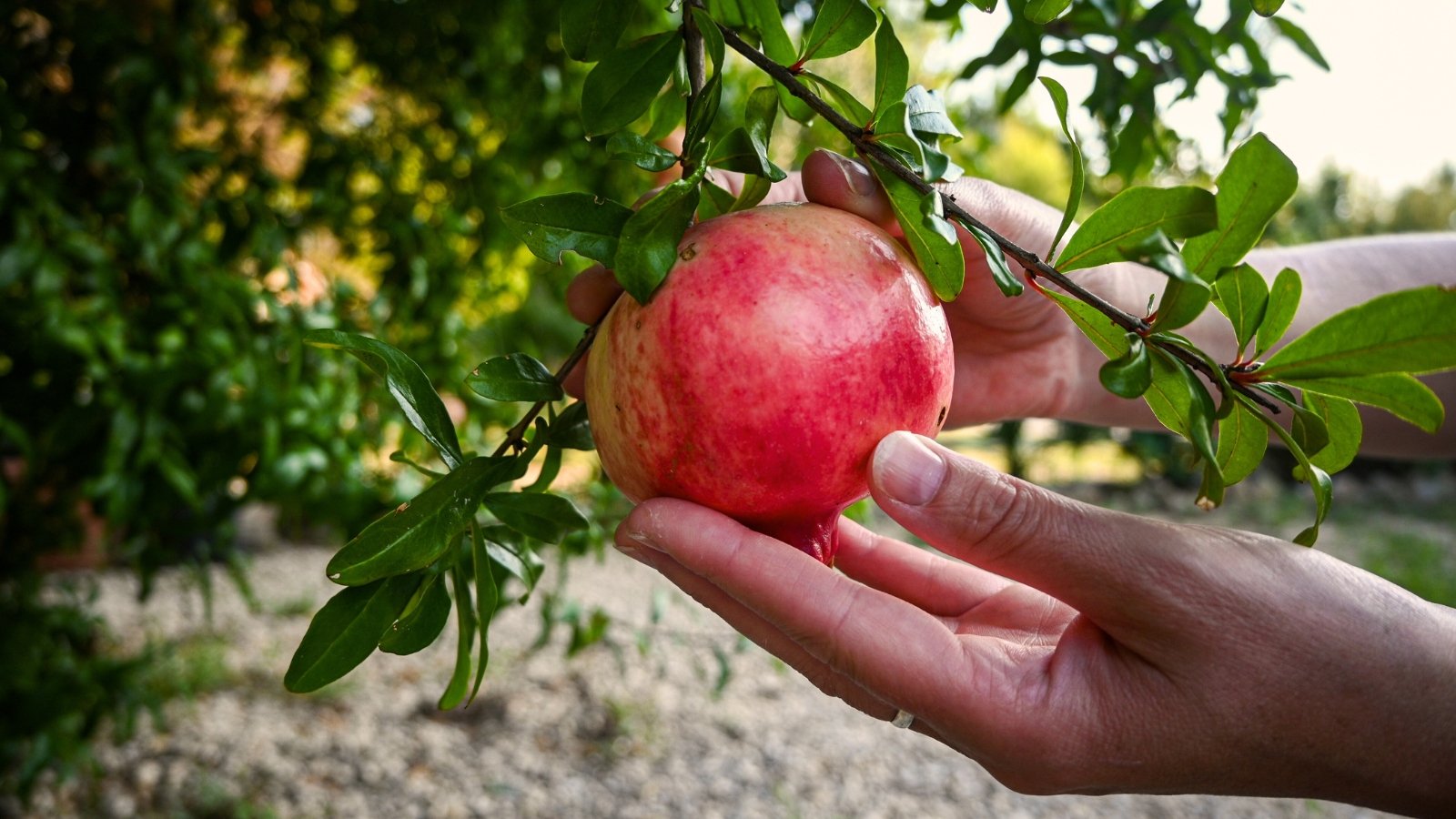

Heavier weight signifies mature innards and full, juicy arils. The bigger, the upper within the case of pomegranates. In any case, it’s the juice you want, and massive ones embody additional.
Expert pomegranate growers can rely carefully on weight as a ripeness indicator. With years of holding the fruits in hand at quite a few phases of ripeness, you’ll know after they’re ready.
Let’s deal with the innards to understand what makes up this delicious fruit’s weight. Aril loosely refers again to the seed, nevertheless pomegranate arils are the fleshy container that holds the seed. The establish pomegranate interprets to “apple of many seeds” in Latin, and pomegranates preserve to this, containing a median of 600 to 800 seeds each.
Arils comprise about 40% of the fruit mass and encapsulate the seed, which makes up about 10% of the fruit. The remaining 50% consists of white flesh that holds the arils in place. Whereas technically edible, most people discard and compost it, as the texture is odd and tastes barely bitter.
The juice from the arils incorporates style, dietary nutritional vitamins, and nutritional vitamins. Take into consideration how loads work it takes to extract the juice from the fruit, and in addition you’ll understand why it’s so pricey to buy on the grocery retailer!
Kind
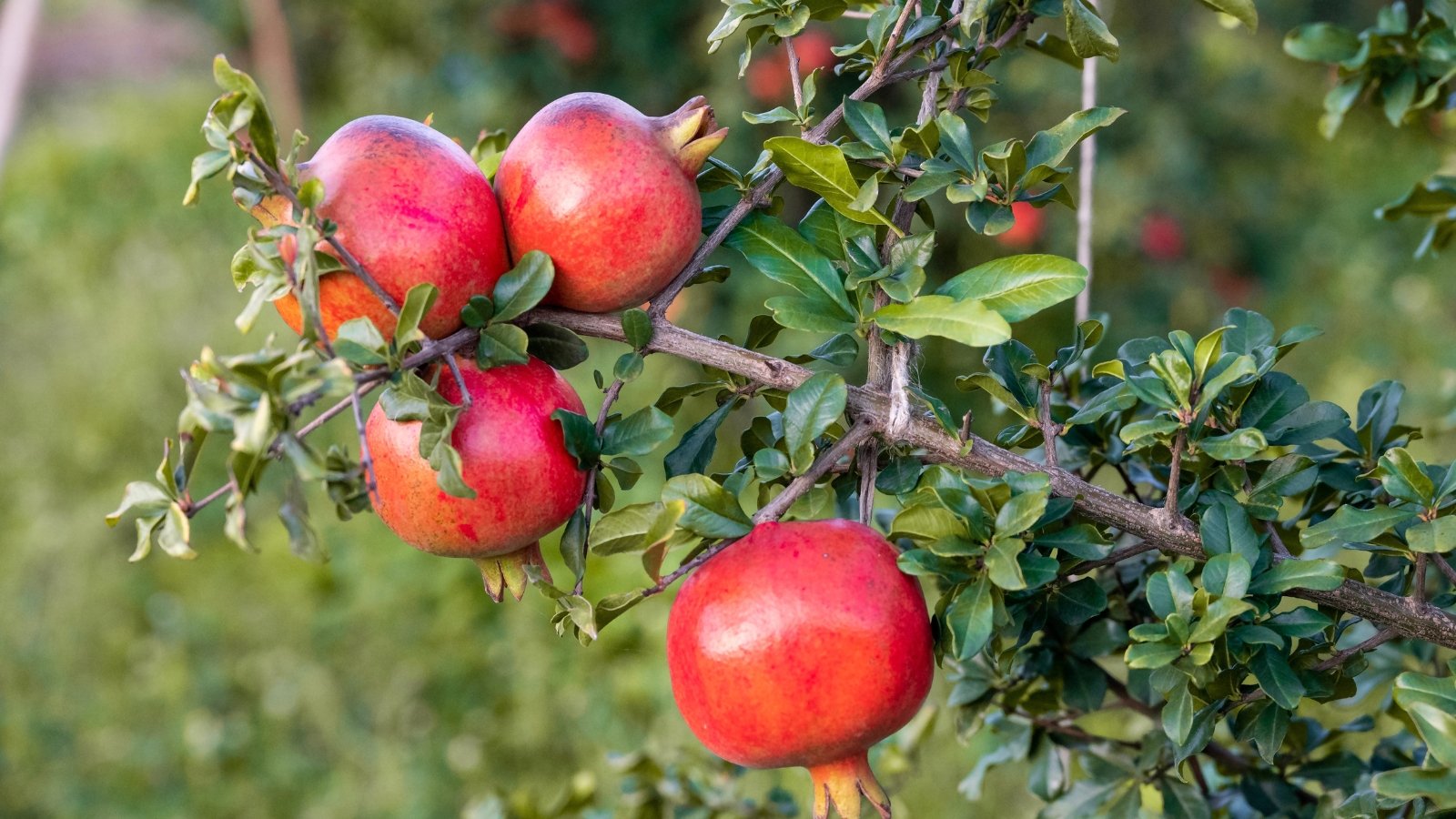

Pomegranates transition from a spherical ball type to a additional oddly fashioned ball with flattened edges. They should have a slight give when you squeeze them, nevertheless they may be overripe within the occasion that they’re mushy or mushy.
Texture


The outer pores and pores and skin turns into thicker and leathery with age and maturity. When the fruit is ripe, chances are high you may uncover small cracks, and the pores and pores and skin is straightforward to scratch and puncture with a pin or fingernail. The fruit innards obtained’t likely be within the good type if the floor is bruised or has large cracks.
Skilled tip: Ignore options to attend until the fruit has completely cracked open, as this invites pests, sickness, and lack of style.
Sound
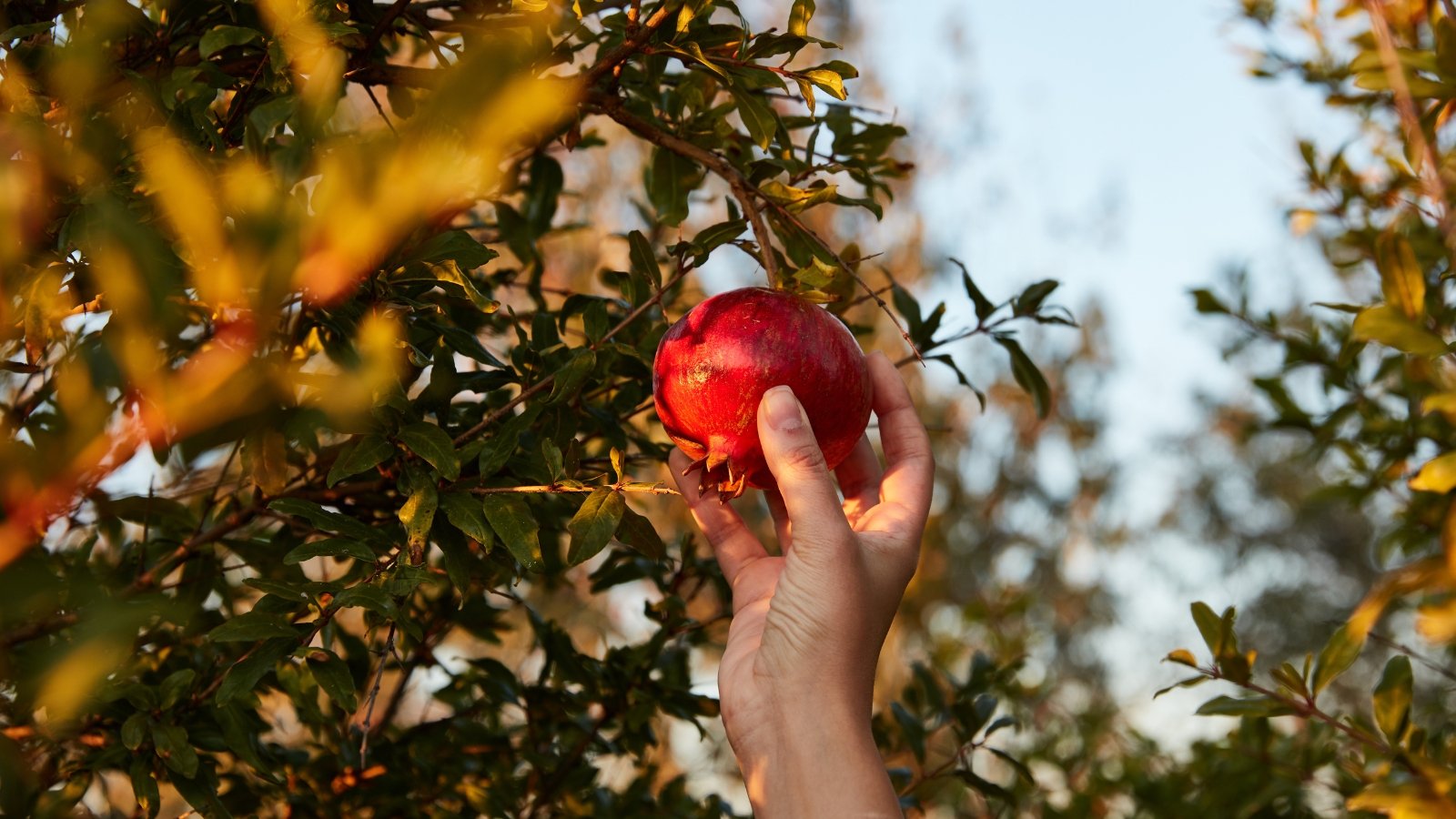

Like watermelons, a ripe pomegranate’s sound changes as a result of it ripens. A uninteresting, heavy thud will occur when the arils inside are juicy and ready for consumption. Some identify the sound barely metallic when it’s ready. Knock gently on one among many flattened edges and listen to intently.
Skilled tip: Report your self knocking on the fruit all by the maturity phases for future reference. This info will seemingly be instrumental inside the coming seasons if that’s your first time rising them.
Color
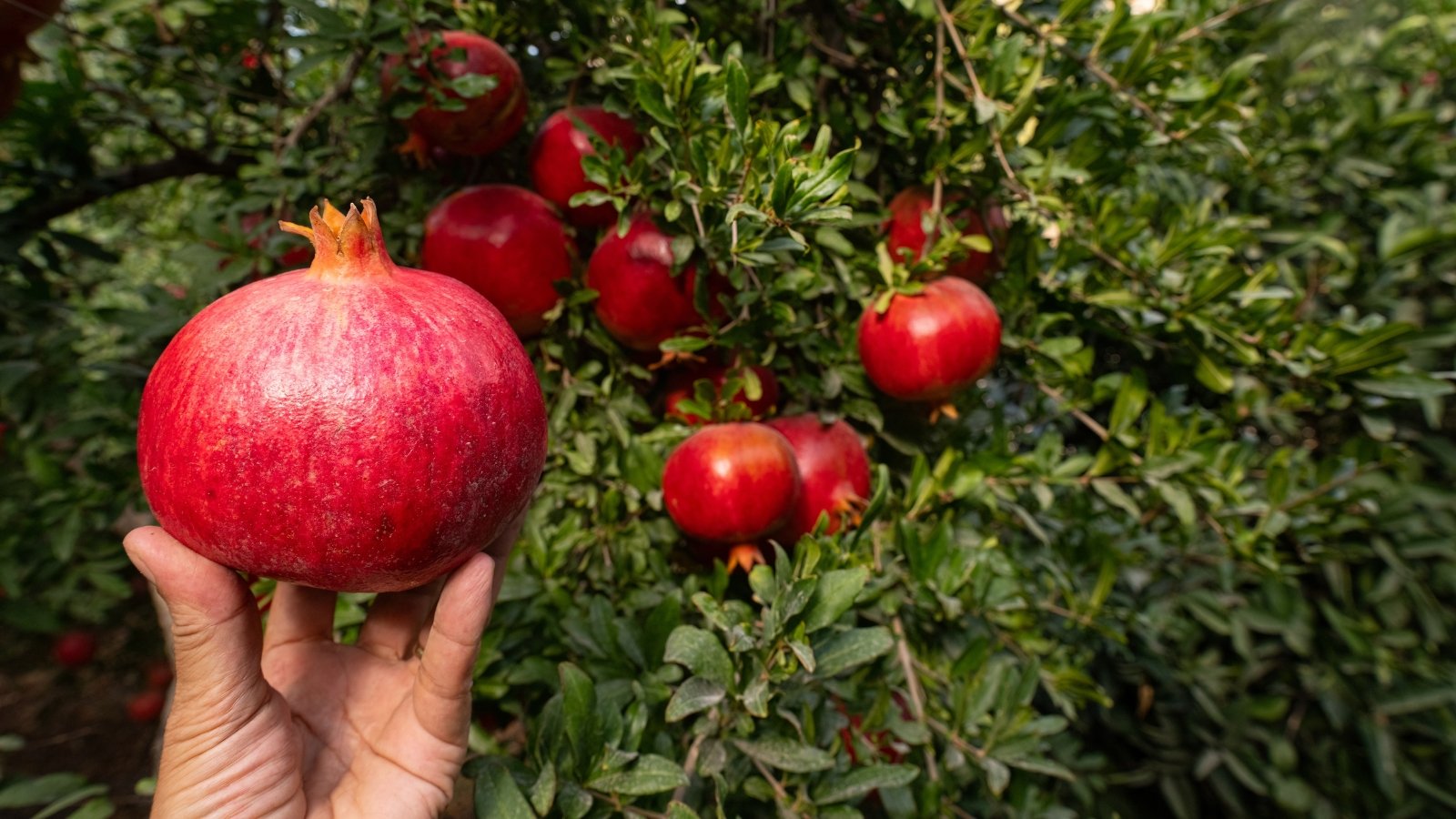

Exterior coloration is not primarily essentially the most right indicator of ripeness on account of variations in varieties in a number of areas. Completely ripened pomegranates fluctuate from yellow to pink to purple and purple, indicating they’re ready to reap. However, some hold inexperienced. Take into consideration the variations in these fully completely different cultivars:
- ‘Haku Botan’ skins keep a pale yellow when ripe
- The mature skins of ‘Kara Gul’ are deep, rich burgundy
- ‘Implausible’ flip shiny, candy-apple purple, and are terribly shiny
- ‘Gissarskii Rozovyi’ is a mottled yellow and pale pink
The skin pores and pores and skin will seemingly be shiny, practically as if it has been shined with oil for present.
Getting Ready To Harvest Pomegranates
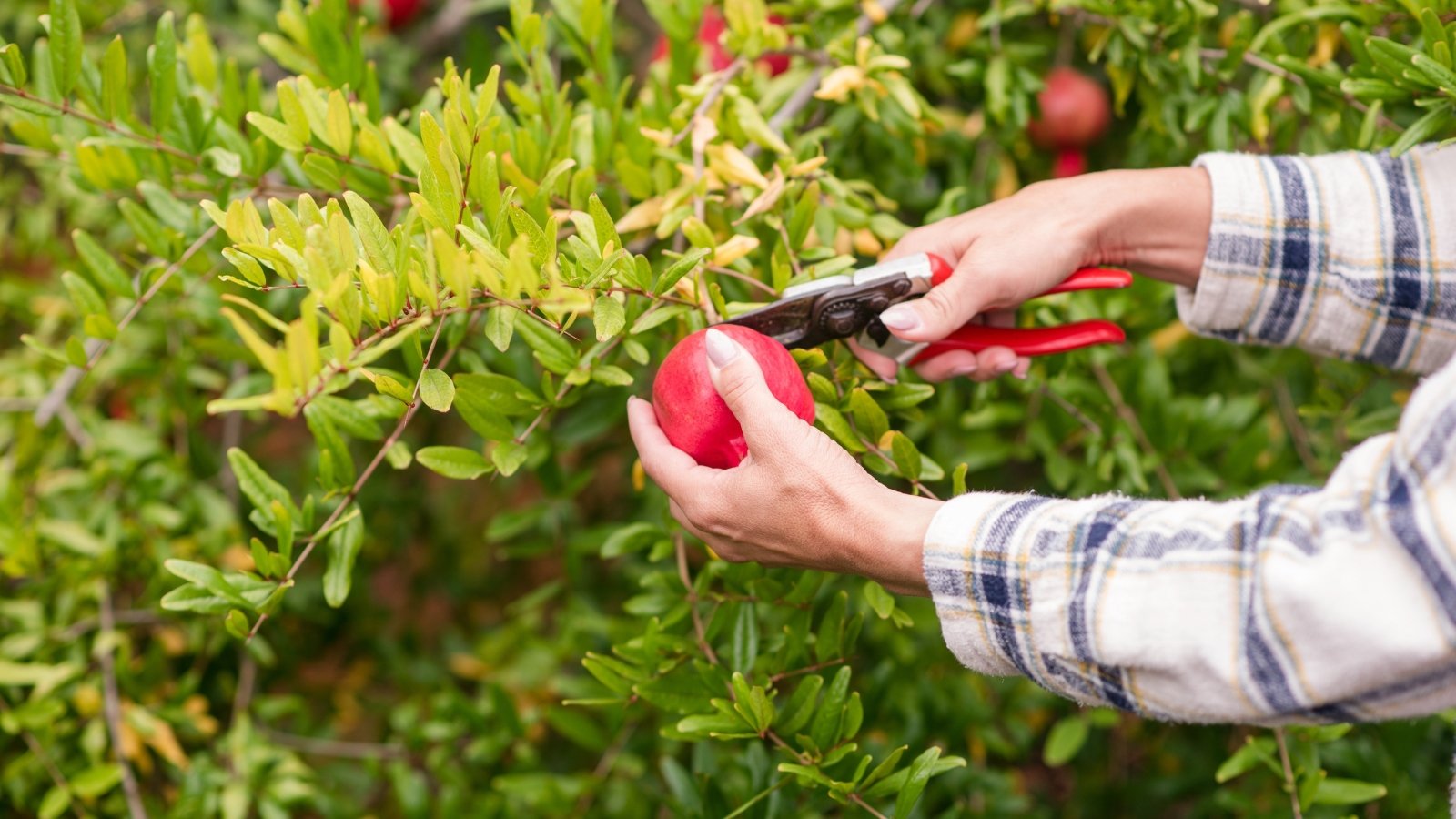

Most pomegranate varieties take three to 4 years to establish sooner than getting a great amount of fruit, whereas others will set fruit in 12 months two. Allow the acceptable days to go (180 to 215), then use these indicators to substantiate your pomegranates are ready to reap.
Wait until the fruit is ripe for the sweetest, juiciest arils attainable. Relying in your space and the vary, plan to reap pomegranates sometime in late fall, September, or November.
Use clear, sharp shears and steer clear of pulling. Leaving the calyx intact will help the fruit hold hydrated and will improve its storage capabilities. Reduce as shut as attainable to the division, taking the stem with you.
Skilled tip: Whereas the fruits obtained’t ripen off the vine, the arils will sweeten, so preserve onto any you accidentally harvested early. Protect them in your counter away from completely different ripening vegatables and fruits and out of direct daylight.
Storage
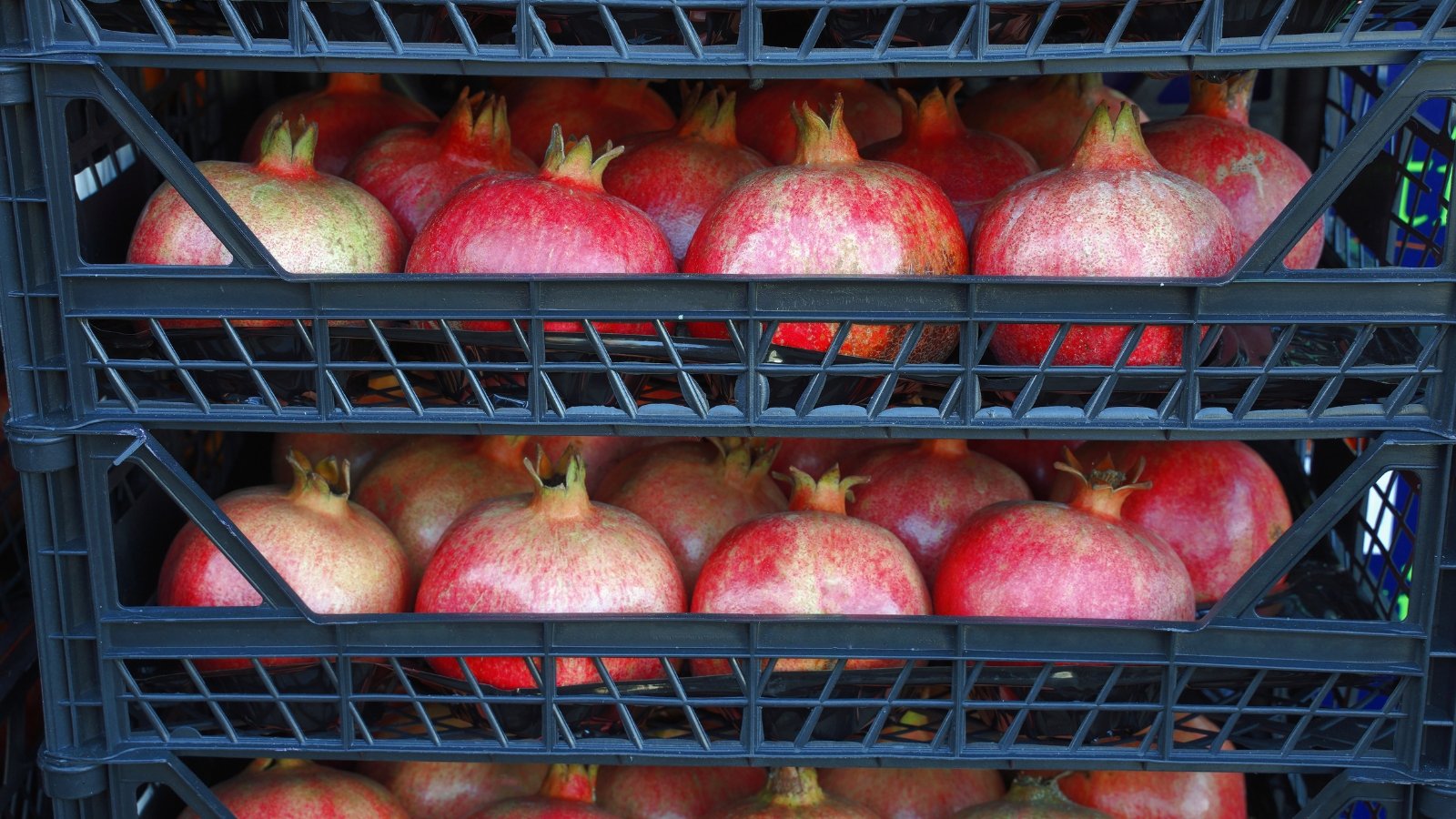

Retailer fruits modern for a few week in a dry, darkish place. After each week or so, add unused fruits to your fridge crisper drawer for various months. A vented bag will allow the fruits to breathe and preserve them from going mushy, and a single layer will preserve them from getting damaged.
When you want to freeze the arils for later use, take away them by doing the subsequent:
- Reduce the fruit in half in no particular orientation.
- Place a bowl beneath your working space to catch arils and juice.
- Use the once more of a wooden spoon to thump the skin pores and pores and skin repeatedly, gently squeezing the fruit.
- As arils launch, chances are high you may need to pry out various the white, fleshy membranes to loosen the innermost arils.
- Proceed until every halves are empty.
- Retailer for as a lot as one 12 months in a freezer safe plastic bag or container.
Using Pomegranates in The Kitchen
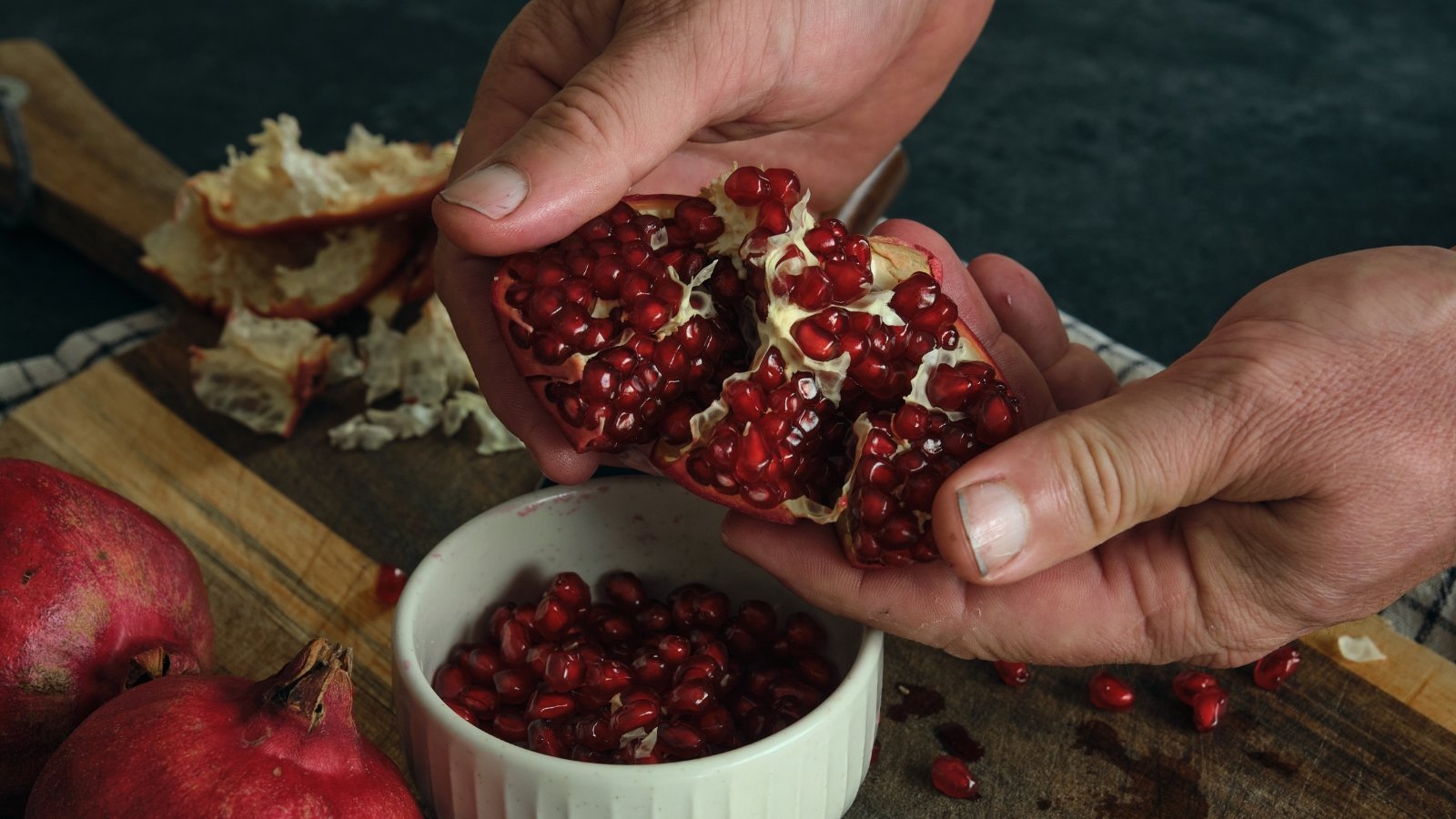

Now that you just simply’ve realized learn how to reap ripe pomegranates and get these juicy little arils out of the flesh, listed beneath are just some strategies to pair them with completely different flavors in fall and winter dishes:
- Add a small dish of them to a charcuterie board. They pair successfully with nuts and cheese.
- Toss them proper right into a baked apple or pear crisp recipe for a novel, tart burst of style.
- Pair them with candied walnuts and feta cheese in your spinach salads for a twist.
- Cook dinner dinner them down proper right into a glaze to prime roasted winter squash or transient ribs.
- Use them in a trip dessert.
Concepts For Pomegranate Rising Success
- Be aware of the instances to maturity of the vary you’re rising.
- Don’t rely solely on the skin pores and pores and skin coloration for ripeness.
- Stay away from prepared until the fruit cracks.
- Enchantment to pollinators like butterflies, bees, wasps, and moths by planting crops they love. Whereas the bushes don’t require one different tree for cross-pollination, yields may improve if you happen to occur to plant one different shut by.
- Solely fertilize all through the primary few years when the shrubs are rising.
- Current lots of daylight and well-draining soil. They’ll perform biggest in USDA Zones 8 to 11.
- Prune repeatedly.
[ad_2]


